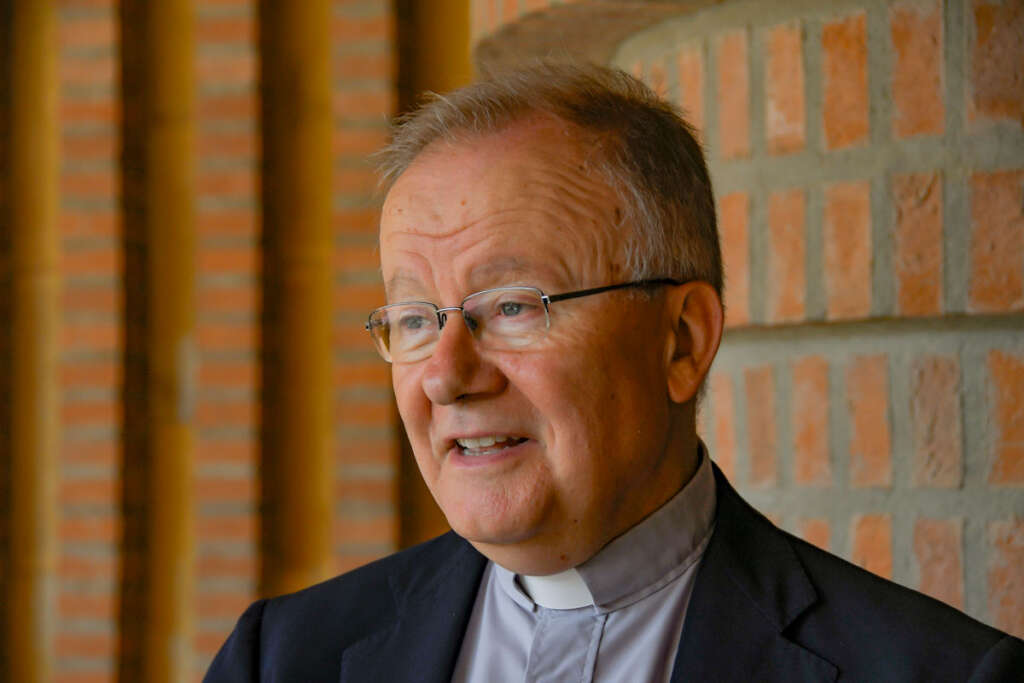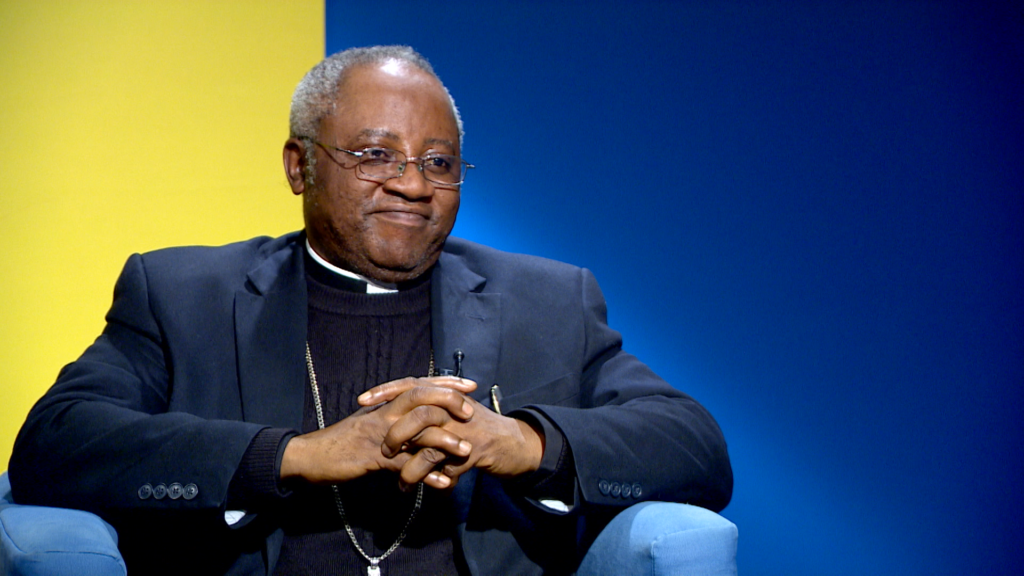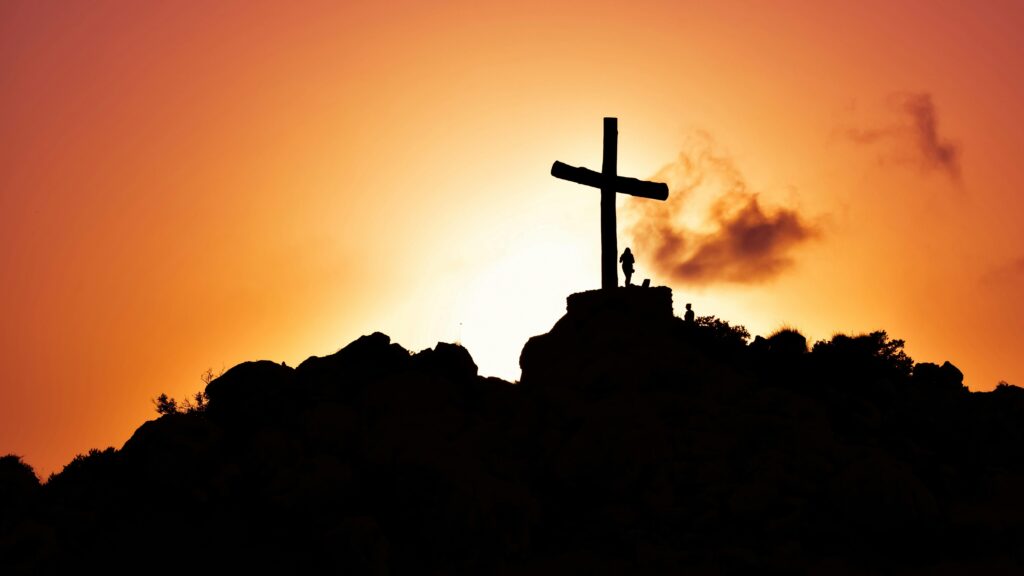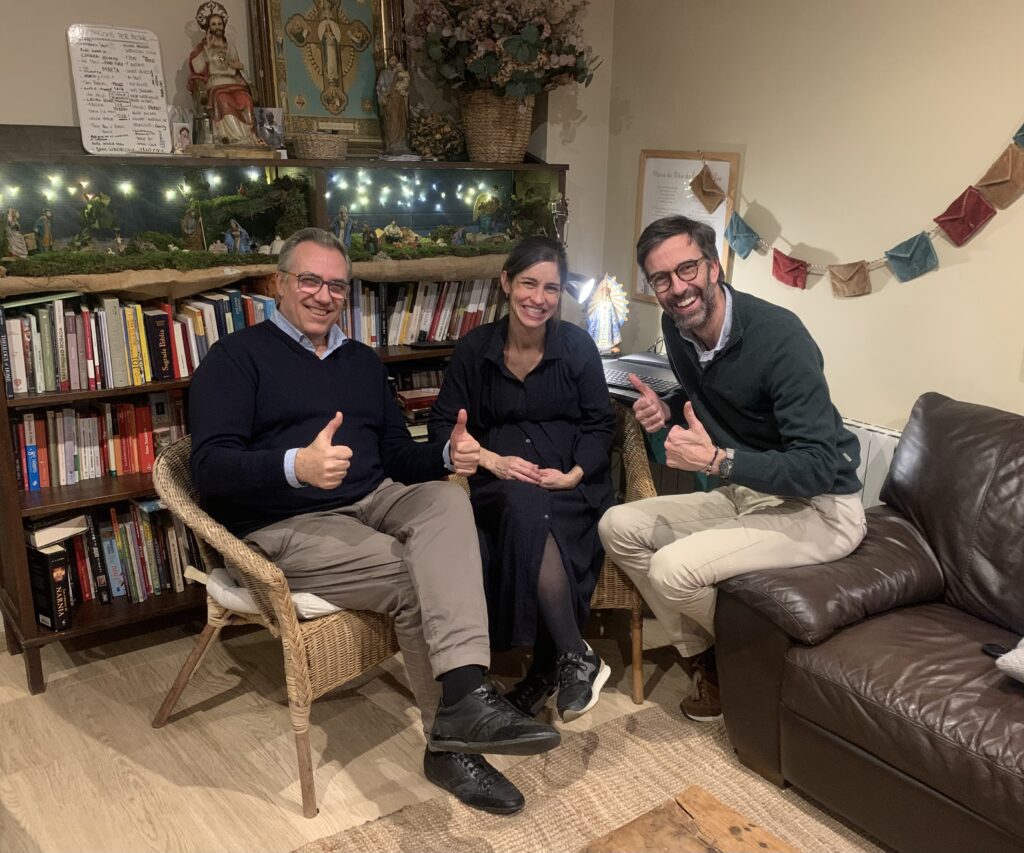Marian shrines have a very, very important place in the life of the Church today
Interview with the rector of the Lourdes shrine

Fr. Michel Daubanes, rector of the Lourdes shrine, visited Torreciudad on July 19 and 20. During his stay, he took the opportunity to greet the bishop of Barbastro-Monzón, Msgr. Ángel Pérez Pueyo, and to have dinner with him. Fr. Daubanes kindly answered several questions related to Marian shrines, the difficulties of Christian families, and his impressions of Torreciudad and the Marian Route:
• The Pope insists that Christians have to bear joyful witness to Christ. What role can Marian’s shrines play in the new evangelization of our society?
M. D.: I think that Marian shrines have a very, very important place in the life of the Church today. A life that must be missionary, as Pope Francis says when he affirms that we are missionary disciples. It is at the shrines that the very numerous pilgrims come to return to the Virgin Mary, to entrust her with their prayers, to intercede for themselves, for their family members, and even for those around them. The shrines offer them many opportunities to nourish their faith and their joy, their joy of believing, their joy of being Christians, and their joy of living.
In a Marian shrine, whether in Lourdes, in Torreciudad, in Fatima, or anywhere else in the world, what seems very important to me (today as yesterday, but today in particular) is the fact of receiving the joy of forgiveness, the joy of living sacramental forgiveness through the possibility of confession. In our societies there is perhaps a growing tendency not to live the sacrament of confession, of forgiveness, of reconciliation, and it is a great pity because without the sacrament one can be overwhelmed, stunned in one’s life of faith, in a life of relationship in which there is no possible forgiveness. The very fact of receiving, of benefiting from God’s mercy, truly allows us to return to faith with great joy, with great faith and serenity.
The other aspect that I see that can characterize shrines is the beauty of the liturgy. If the liturgy is more beautiful, if the prayer is more beautiful, the pilgrims will be more nourished by that liturgy and, in fact, invited to listen to it in the joy of returning to faith more strongly in daily life. They achieve this through, of course, the sacrament of the Eucharist, the celebration of the Mass, but also relevant is everything that comes from popular piety (for example, the nocturnal torchlight procession in Lourdes), in which the shrine allows the pilgrim to truly live and understand his faith.
And then, perhaps the last aspect I would like to highlight is the fraternal spirit that exists in these sanctuaries, the solidarity, the charity, the fraternity that is lived within the sanctuary, which impacts and moves each person beyond their stay of a few hours. Pope Francis told us this in Fratelli tutti, and I think this is ideally expressed in Lourdes, for example, through the service of charity, the service of hospitality, volunteering alongside the sick and people in chronic conditions. This effort ensures that everyone leaves the sanctuary with a big smile on their face.
• The Virgin is Mother of Mercy, the attitude that sums up this pontificate. How can sanctuaries be mediators of compassion?
M. D.: It is absolutely central for a sanctuary to be able to offer the sacrament of forgiveness and reconciliation. There are people, pilgrims, who experience it regularly in their parishes, but there are also pilgrims who have not experienced it for a long time, for various reasons: they have not had the opportunity, they perhaps believe that their sin is so great that they think it cannot be forgiven; and there are also people who have never gone to confession. Listening to the celebration of this sacrament truly allows a very, very strong connection to take up again the Christian life, to recover the relationship with the life of faith, charity and hope.
It seems to me that the sanctuary is also a place where we must be particularly generous with regard to blessing. Pope Francis insists a lot on this blessing: at the end of the Mass, at the end of the prayer of a whole group, of a community, and also afterwards in the sacristy on an individual basis. And another aspect that I would like to underline is the possibility of listening on the part of ordained ministers, and also of making sure that there are lay people with responsibility, sufficiently trained, to listen to the pilgrims who arrive, to accompany them in everything they experience: questions, sorrows, sufferings, joys… In fact, offering a real, attentive and personal listening, which leads to a certain spiritual accompaniment, has acquired a very important role.
• Based on your experience in a place of pilgrimage as important as Lourdes, what would you say to Christian families who are discouraged by the difficulties in raising their children caused by the social environment?
M. D.: As a consequence of this constant listening (which does not consist in immediately resolving what affects people, but in dedicating time to them), I think that it is appropriate to explain to families, regarding this difficulty in the education of children, that the message of faith is engraved in them from their baptism and confirmation. If a child abandons the faith, even leaves the family environment and enters into a life that is not correct, it is always appropriate to be present to accompany him, never to abandon him, even if the child breaks the relationship. It is important not to forget that it is the Spirit who acts in the heart, and with prayer and example, the Spirit of the Lord will be the one who can bring back the child who lives far from the family, far from the faith. In this sense, I think that it is essential for parents, or for grandparents, to exonerate themselves in relation to the life of faith of young people, of children, assuring them that, in most cases, they have done everything that was possible, everything that should be done.
• Torreciudad aspires to be known as the sanctuary of the family. What impression has it made on you on your first visit?
M. D.: I must say that I was very happy to have been able to spend a few hours here for the first time, to discover the natural beauty of the place, the beauty of the sanctuary and the temple, the chapels, the Via Crucis, the images that allow one to recite the mysteries of the Rosary… Everything offers an impression of beauty, an impression of peace, and I am touched at the same time by the model of the Holy Family, defined in the different scenes of the altarpiece. An altarpiece that allows one to make one’s own the life of the Holy Family in relation to one’s family. I liked that the scenes do not idealise the life of Jesus, Mary and Joseph; we cannot forget that, although they welcomed the Son of God, they were a totally human family, with problems and sufferings that the gospels tell us about. The flight into Egypt, the Virgin Mary suffering at the foot of the cross… If the Holy Family is idealised, it alienates people, who find it difficult to find comfort and protection in it.
This morning I had a pleasant experience, at the end of the celebration of the Eucharist, when I met several people on the esplanade. I was impressed by the number of families present who participate in the life of the sanctuary, who attended Mass on Saturday, which is not the Sunday Mass. There were families who came to pray, with small and large children, and that is very good, an example of Christian education. And I noticed a child who was looking after his little sister, who was in the stroller, outside the church. He looked after her and comforted her, and in this way his parents could participate fully in the celebration of the Eucharist. I think that it is a testimony for everyone, which helps to live the faith and to strengthen it.
I have a great feeling of joy and faith, which comes from these hours spent in Torreciudad. And I would like to take this opportunity to show my deepest gratitude for the welcome received by all those who have responsibilities in this sanctuary. I have experienced first-hand the solidarity in prayer to the Virgin Mary, which has comforted so many pilgrims and which unites the sanctuaries that make up the Marian Route.
Related

Thy will be done
Albert Cortina
17 April, 2025
35 min

Despite hardships, Christianity is growing “astronomically” in northern Nigeria
Ayuda a la Iglesia Necesitada
10 April, 2025
3 min

“Christianity, a Powerful Engine of Social Transformation”
Exaudi Staff
09 April, 2025
3 min

Let God be God
Albert Cortina
11 March, 2025
25 min
 (EN)
(EN)
 (ES)
(ES)
 (IT)
(IT)

